Related Research Articles

A lightvessel, or lightship, is a ship that acts as a lighthouse. They are used in waters that are too deep or otherwise unsuitable for lighthouse construction. Although some records exist of fire beacons being placed on ships in Roman times, the first modern lightvessel was off the Nore sandbank at the mouth of the River Thames in England, placed there by its inventor Robert Hamblin in 1734. The type has become largely obsolete; lighthouses replaced some stations as the construction techniques for lighthouses advanced, while large, automated buoys replaced others.
Myron Waldman was an American animator, best known for his work at Fleischer Studios.

Emerson Hugh De Lacy was an American politician and socialist. He served on the Seattle City Council from 1937 to 1940 and as a member of the United States House of Representatives from 1945 to 1947. He represented the First Congressional District of Washington as a Democrat.

Northwest Seaport Maritime Heritage Center is a nonprofit organization in Seattle, Washington dedicated to the preservation and interpretation of Puget Sound and Northwest Coast maritime heritage, expressed through educational programs and experiences available to the public aboard its ships. The organization owns three large historic vessels docked at the Historic Ships' Wharf in Seattle's Lake Union Park; the tugboat Arthur Foss (1889), Lightship 83 Swiftsure (1904), and the halibut fishing schooner Tordenskjold (1911). These vessels are used as platforms for a variety of public programs, ranging from tours and festivals to restoration workshops and vocational training.

Light Vessel Number 83 (LV-83) Swiftsure is a lightship and museum ship owned by Northwest Seaport in Seattle, Washington. Launched in 1904 at Camden, New Jersey and in active service until 1960 after serving on all five of the American west coast's lightship stations, it is the oldest surviving lightship in the United States, the only one still fitted with its original steam engine, and the last lightship with wooden decks. LV-83 was designated a National Historic Landmark in 1989, and has been undergoing major restoration since 2008.
Sahaptin or Shahaptin, endonym Ichishkin, is one of the two-language Sahaptian branch of the Plateau Penutian family spoken in a section of the northwestern plateau along the Columbia River and its tributaries in southern Washington, northern Oregon, and southwestern Idaho, in the United States; the other language is Nez Perce or Niimi'ipuutímt. Many of the tribes that surrounded the land were skilled with horses and trading with one another; some tribes were known for their horse breeding which resulted in today's Appaloosa or Cayuse horse.

James Michael Kerrigan was an Irish actor.
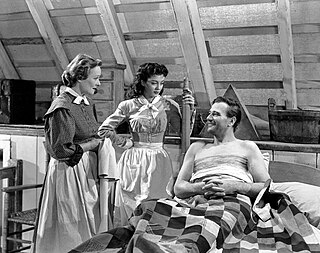
Archibald Job Stout, ASC was an American cinematographer whose career spanned from 1914 to 1954. He enjoyed a long and fruitful association with John Ford, working as the principal cinematographer on Fort Apache (1948) and second unit cinematographer on She Wore a Yellow Ribbon (1949) and The Quiet Man (1952), becoming the only 2nd unit cinematographer to receive an Oscar. In a wide-ranging career, he also worked on such films as the original version of The Ten Commandments (1923) and several Hopalong Cassidy and Tarzan films. His last film was the airborne disaster movie The High and the Mighty in 1954.
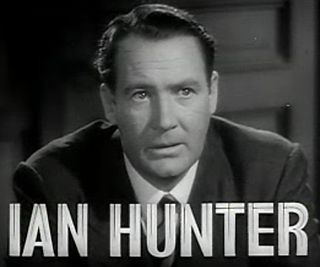
Ian Hunter was a Cape Colony-born British actor of stage, film and television.
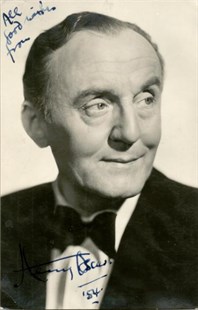
Henry Wale, known professionally as Henry Oscar, was an English stage and film actor. He changed his name and began acting in 1911, having studied under Elsie Fogerty at the Central School of Speech and Drama, then based in the Royal Albert Hall, London. He appeared in a wide range of films, including The Man Who Knew Too Much (1934), Fire Over England (1937), The Four Feathers (1939), Hatter's Castle (1942), Bonnie Prince Charlie (1948), Beau Brummell (1954), The Little Hut (1957), Beyond This Place (1959), Oscar Wilde (1960), Lawrence of Arabia (1962), The Long Ships (1963) and Murder Ahoy! (1964).

Jerry Joseph O'Connell was an American attorney and politician. He is most notable for his service as a member of the United States House of Representatives from Montana.
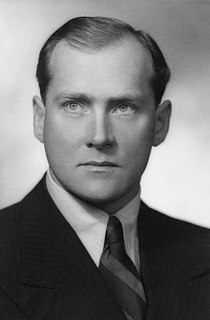
John Riddoch Rymill was an Australian polar explorer, who had the rare second clasp added to his Polar Medal.

The United States Coast Guard Cutter Fir was the last lighthouse tender built specifically for the United States Lighthouse Service to resupply lighthouses and lightships, and to service buoys. Fir was built by the Moore Drydock Company in Oakland, California in 1939. On 22 March 1939, the U.S. Lighthouse Tender Fir was launched. She was steam driven with twin screws, 175 feet (53 m) in length, had a beam of 32 feet (9.8 m), drew 11 feet 3 inches (3.43 m) of water, and displaced 885 tons. Fir was fitted with a reinforced bow and stern, and an ice-belt at her water-line for icebreaking. She was built with classic lines and her spaces were lavishly appointed with mahogany, teak, and brass. The crew did intricate ropework throughout the ship. The cost to build Fir was approximately US$390,000. Fir's homeport was Seattle, Washington for all but one of her fifty one years of service when she was temporarily assigned to Long Beach, California when USCGC Walnut was decommissioned on 1 July 1982.

William Paul Lundigan was an American film actor. His more than 125 films include Dodge City (1939), The Fighting 69th (1940), The Sea Hawk (1940), Santa Fe Trail (1940), Dishonored Lady (1947), Pinky (1949), Love Nest (1951) with Marilyn Monroe, The House on Telegraph Hill (1951), I'd Climb the Highest Mountain (1951) and Inferno (1953).

Ronald Alfred Shiner was a British stand-up comedian and comedy actor whose career encompassed film, West End theatre and music hall.

The Mary D. Hume was a steamer built at Gold Beach, Oregon in 1881, by R. D. Hume, a pioneer and early businessman in that area. Gold Beach was then called Ellensburg. The Hume had a long career, first hauling goods between Oregon and San Francisco, then as a whaler in Alaska, as a service vessel in the Alaskan cannery trade, then as a tugboat. She was retired in 1977 and returned to Gold Beach. In 1985 she sank in the Rogue River and has remained there ever since as a derelict vessel on the shoreline. The Hume is listed on the National Register of Historic Places.

Claud Allister was an English actor with an extensive film career in both Britain and Hollywood, where he appeared in more than 70 films between 1929 and 1955.

Joseph A. Creaghan was an American film actor. He appeared in more than 300 films between 1916 and 1965, and notably played Ulysses S. Grant nine times between 1939 and 1958, most memorably in Union Pacific and They Died with Their Boots On.
Brock Williams was a prolific English screenwriter with over 100 films to his credit between 1930 and 1962. He also had a brief directorial career, and later also worked in television. Two of his novels The Earl of Chicago and Uncle Willie and the Bicycle Shop were both adapted into films.
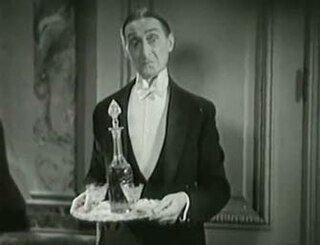
Edgar Norton was an English-born American character actor.
References
- ↑ "Archie Binns, NW Author, Dies" Seattle Times, 4 July 1971.